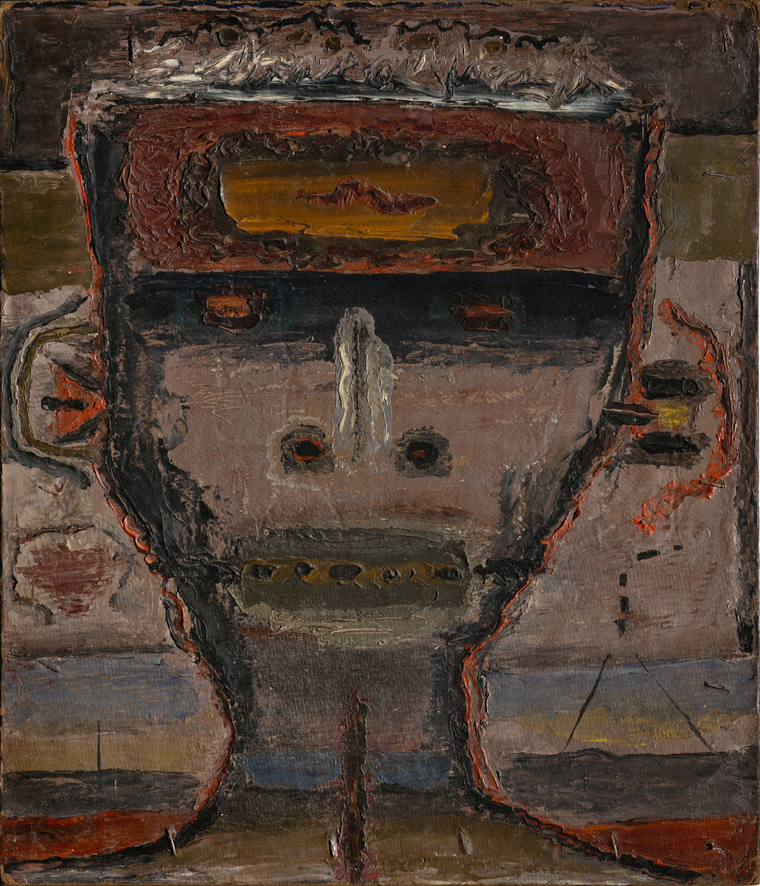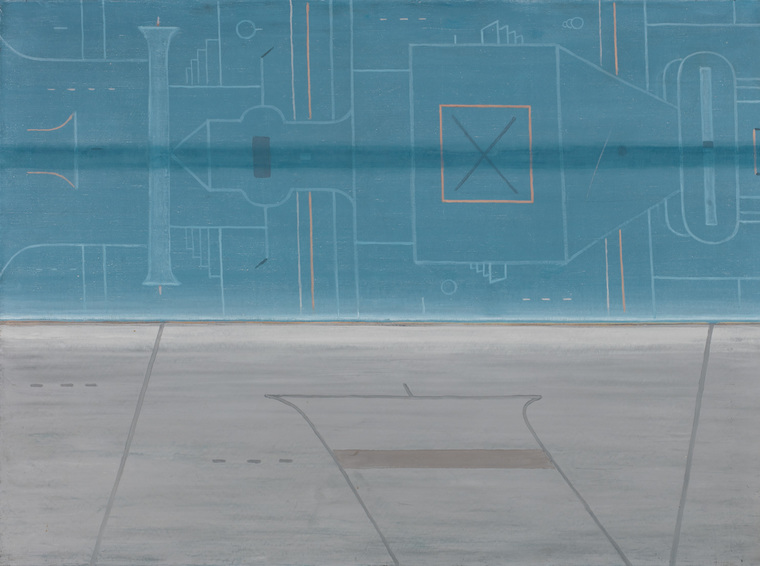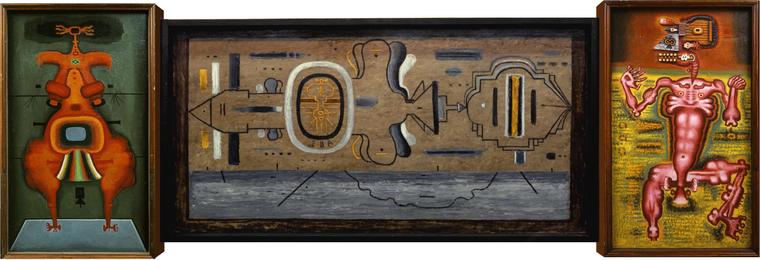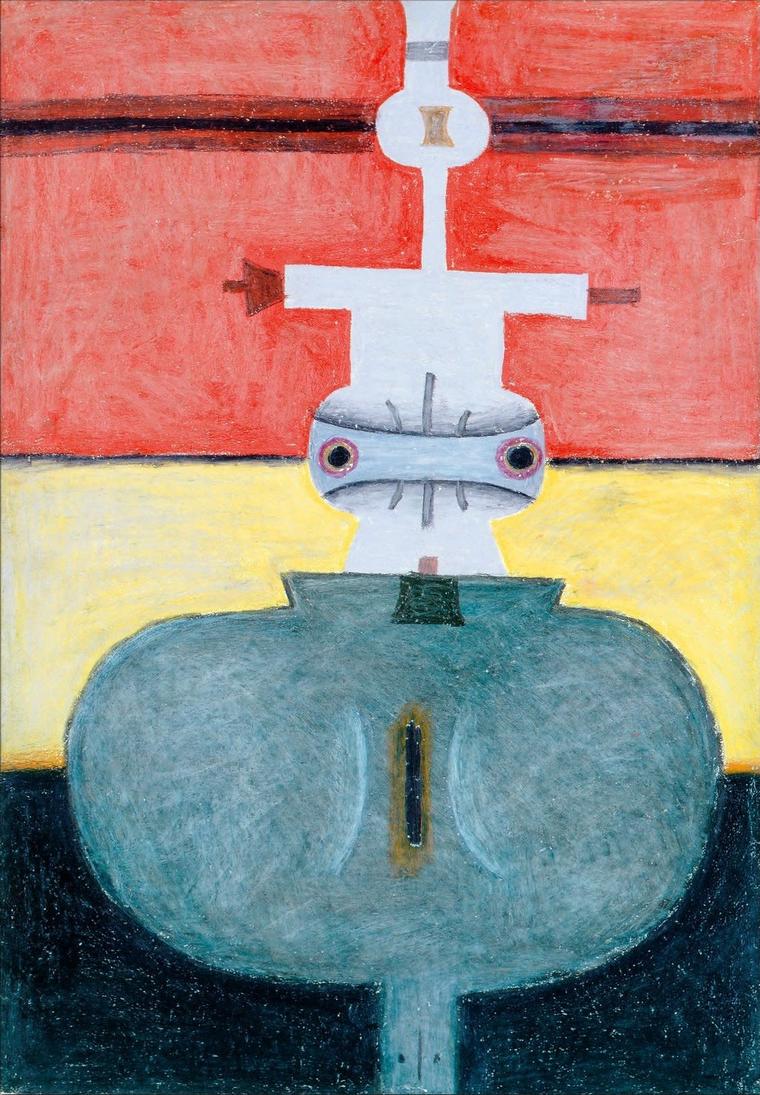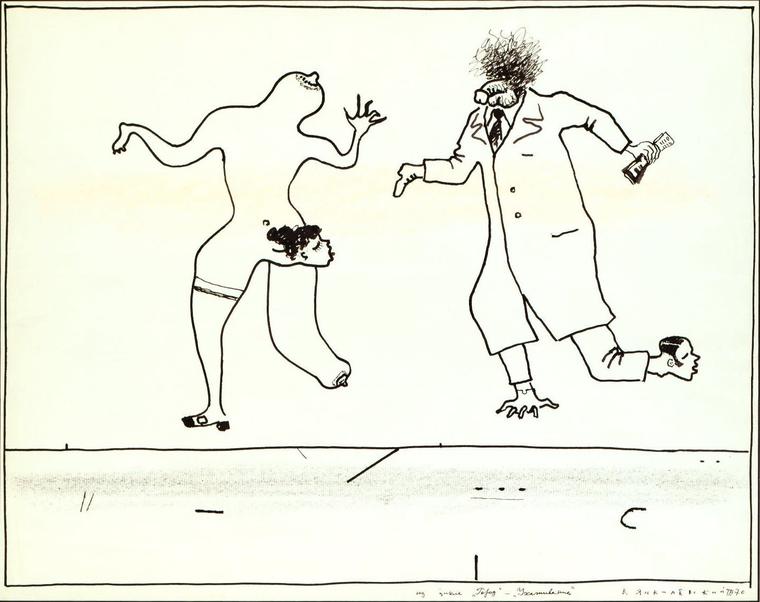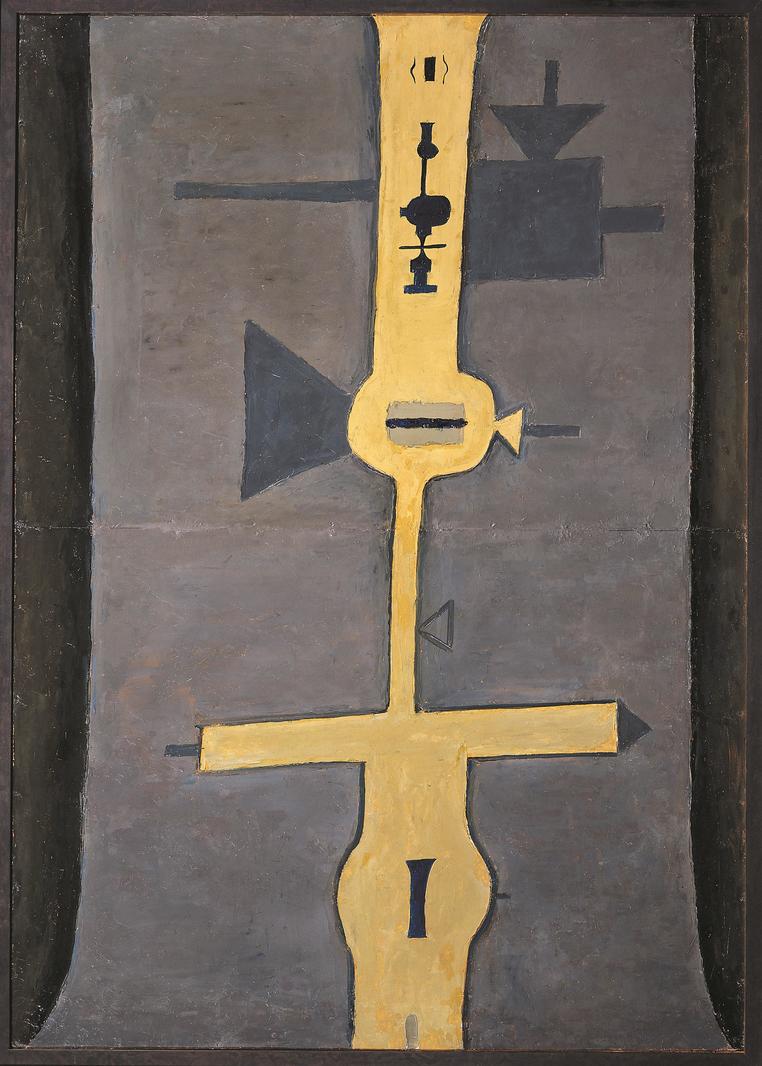
The work “Nefertiti” fully reveals the interest of Vladimir Yankilevsky , a vivid representative of Soviet unofficial art, in archaic art – ritual and totem masks, archetypal images, schematic and graphic accuracy of ancient works of art. Unlike many works by Yankylevsky, filled with bright modernist colors, the color decision of “Nefertiti” tends to a gray and earthy beige scale – natural colors. An anthropomorphic figure of Nefertiti, as if propping a canvas, is depicted schematically and resembles an ancient statue, as if found in earth or sand.
Yanikilevsky himself called the connection with the archaic forms random, emphasizing its importance and basicity. "The penetration of elements of the archaic, outwardly reminiscent of the Aztec, Babylonian or any other, into my work was rather random: I did not copy the ancient samples, did not imitate them, but i was engaged in other things, figuring out where the boundary between the living and the dead passes. <...> Then they did not imitate reality, but tried to express life, and the Negro masks appeared, ... in general, you understand. Whatever I did then, all those monsters, I was guided by the found principle, and absolutely alive characters arose, but they were archaic at the same time; already after I realized that the archaic is the basis of any art, being its skeleton, sometimes invisible. Archaic is a genuine experience of being”, – said Yankilevsky in an interview.
The solution of the Nefertiti image itself is supplemented with features of technogenicity, especially the sense organs – hands, eyes, ears. This feature of the 60's – the era of technological progress, the conquest of space and popular science fiction literature. An ancient statuette with mechanized senses – archaic becomes a method through which it is possible to express modernity for Yankylevsky. V
